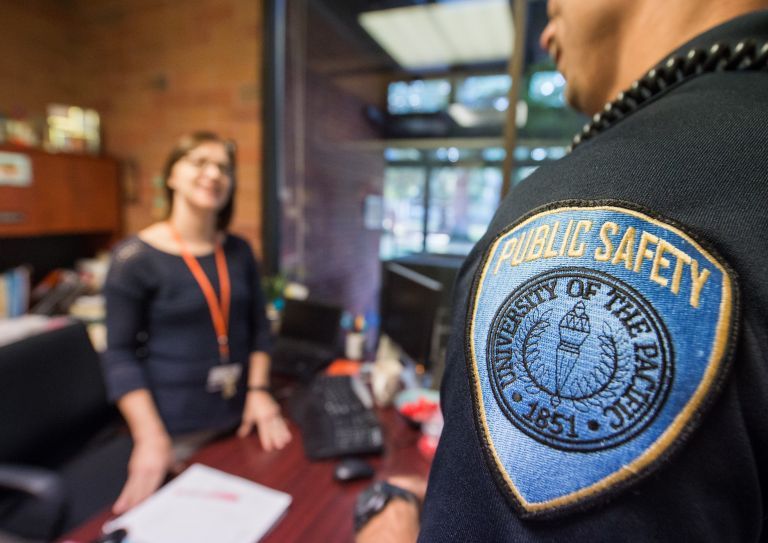In an Emergency:
Your safety our primary concern. If there is an emergency or you witness suspicious activity, contact Public Safety by doing one of the following:
- Call 6-3911. This will connect you to Public Safety from any on-campus phone.
- Press an emergency call button on a “blue” light station. This will directly connect you to Public Safety on your campus.
- Call Public Safety on the respective campuses:
- Stockton: 6-2537 or (209) 946-2537
- Sacramento: 4-7200 or (916) 739-7200
- San Francisco: 5-6411 or (415) 929-6456
University of the Pacific is committed to providing a safe educational and working environment for all of our students, staff, faculty, alumni, and guests. While Public Safety provides 24-hour protection on all three of the University’s campuses, it is important that everyone in the Pacific community share in the responsibility of keeping themselves and others safe. Included on this website are important emergency resources and information that will help you and the University prepare, respond, and recover from a crisis situation.




